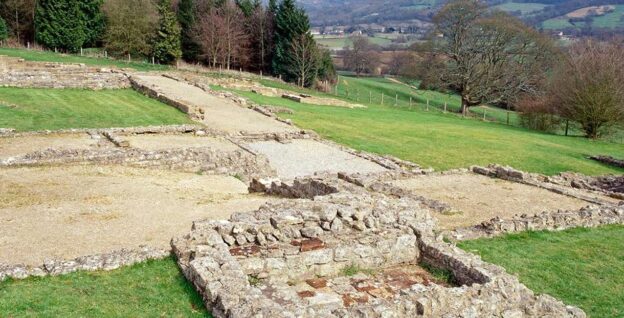Cheltenham in prehistoric and ancient times.
Prehistoric Times:
Settlements and Activity:
The wider area of Gloucestershire has revealed signs of early human activity and settlements. Archaeological digs in and around Cheltenham have uncovered artefacts from the Neolithic period (around 4000 – 2500 BC). Flint tools, pottery fragments, and remnants of ancient structures point to a settled community with established trade and communication networks.
Bronze and Iron Ages:
During the Bronze Age (circa 2500 – 800 BC) and the Iron Age (circa 800 BC – AD 43), hill forts began to appear in the wider region. These structures, primarily used as defensive mechanisms, also served as trade and social hubs. Although Cheltenham itself doesn’t have a prominent hill fort, nearby locations, such as Leckhampton Hill, show evidence of these ancient communities.
Roman Era (AD 43 – AD 410):
Roman Conquest and Settlement:
After the Roman invasion of Britain in AD 43, they expanded their reach into the Gloucestershire area, establishing roads, villas, and smaller settlements. The region’s natural resources, including its fertile land and mineral-rich waters, made it an attractive location for Roman colonizers.
Artefacts and Evidence:
Within Cheltenham itself, various Roman artefacts have been discovered over the years. These include coins, pottery, and even remnants of Roman villas. The presence of these artefacts points to at least a moderate level of Roman occupation and influence.
One significant find in the area is the Chedworth Roman Villa, located a bit north of Cheltenham. This villa, one of the largest and best-preserved in Britain, provides a glimpse into the luxurious lifestyles of the Roman elite. While not in Cheltenham proper, it’s indicative of the broader Roman presence in the region.
Baths and the Mineral Springs:
While the famous spa waters of Cheltenham were widely recognized only in the 18th century, there’s some speculation that the Romans might have been aware of, and possibly used, these mineral springs. The presence of Roman coins and other artefacts near these springs lends some credence to this theory, though concrete evidence of Roman spa structures is lacking.
In summary, while Cheltenham’s prominence grew mainly from the 18th century onwards with the discovery of its spa waters, the area had been touched by human activity for millennia. From prehistoric settlers to Roman colonizers, various peoples saw the value in this part of Gloucestershire, setting the stage for the town’s later significance.
